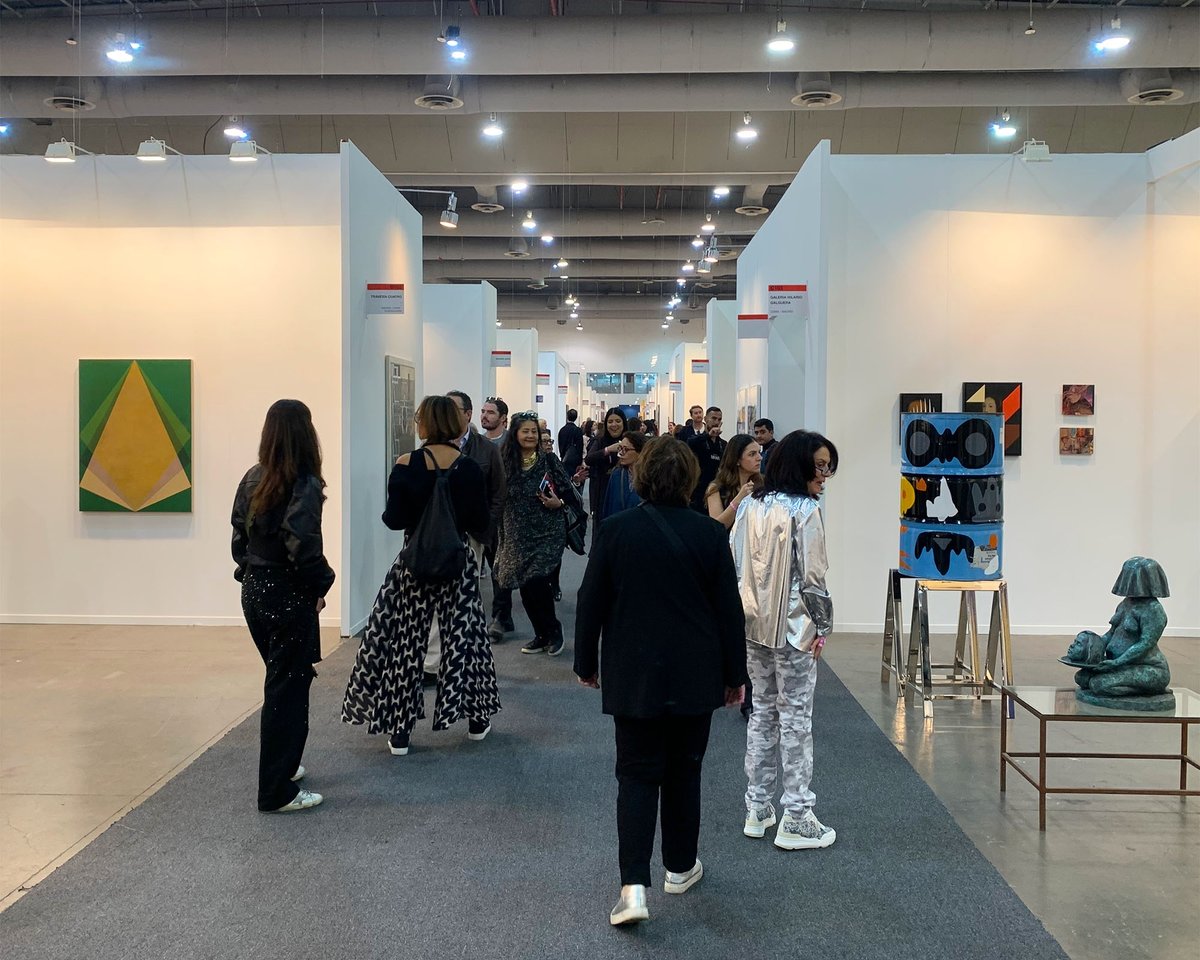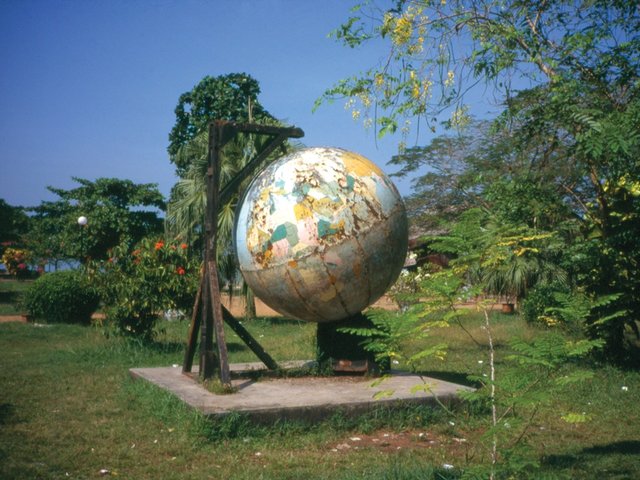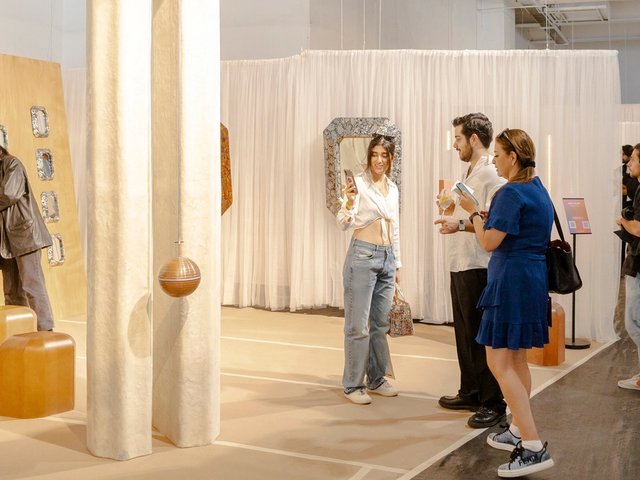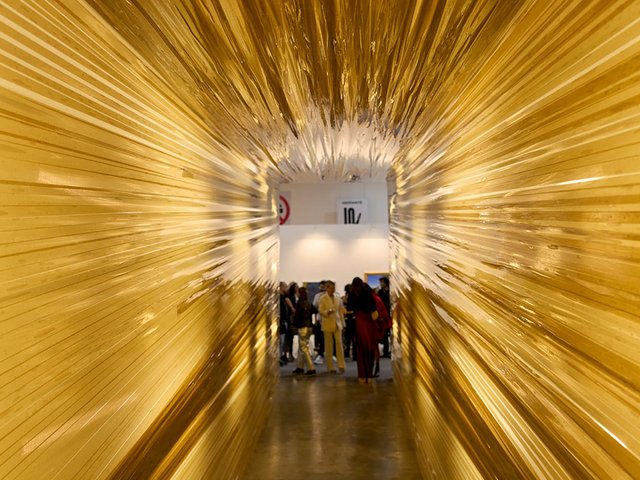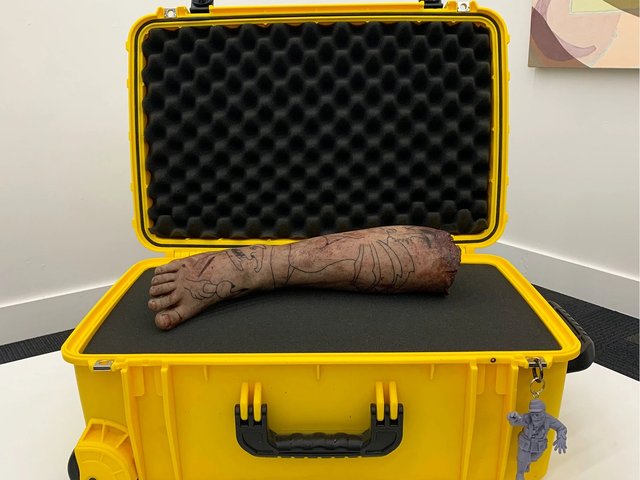Crowds of VIPs filled the aisles of the sprawling Centro Citibanamex in Mexico City on Wednesday (5 February) for the preview of Zona Maco, which boasts more than 220 galleries across several sectors. And despite a series of rocky geopolitical events leading up to the fair, fears of US president Donald Trump’s threatened 25% tariffs on imports from Mexico—now suspended for at least a month—did nothing to dampen the mood or commercial activity.
“A lot of Americans have been asking if we’re worried about tariffs, but I think the people who are most scared about tariffs are Americans,” says a staffer on the stand of local powerhouse gallery Labor. He adds: “The first day has been very good, very diverse, with people from the US, Canada, Europe and also Russia.”
The gallery’s stand at the fair is a group presentation that includes a wall of works by the French artist Étienne Chambaud, who also has a concurrent solo show at Labor’s space in the Miguel Hidalgo neighbourhood. Chambaud’s wall-based works at the fair consist of found icon paintings he bought at antique stores and has nearly completely obscured with gold paint, heightening their gilded brilliance. The pieces are priced between $14,000 and $31,500 each.
Another pillar of the Mexico City scene, OMR, is likewise showing a group presentation highlighting many of the best-known artists on its roster, including the Los Angeles-born and Guadalajara-based Eduardo Sarabia, the Swiss artist Claudia Comte and the Danish collective Superflex.
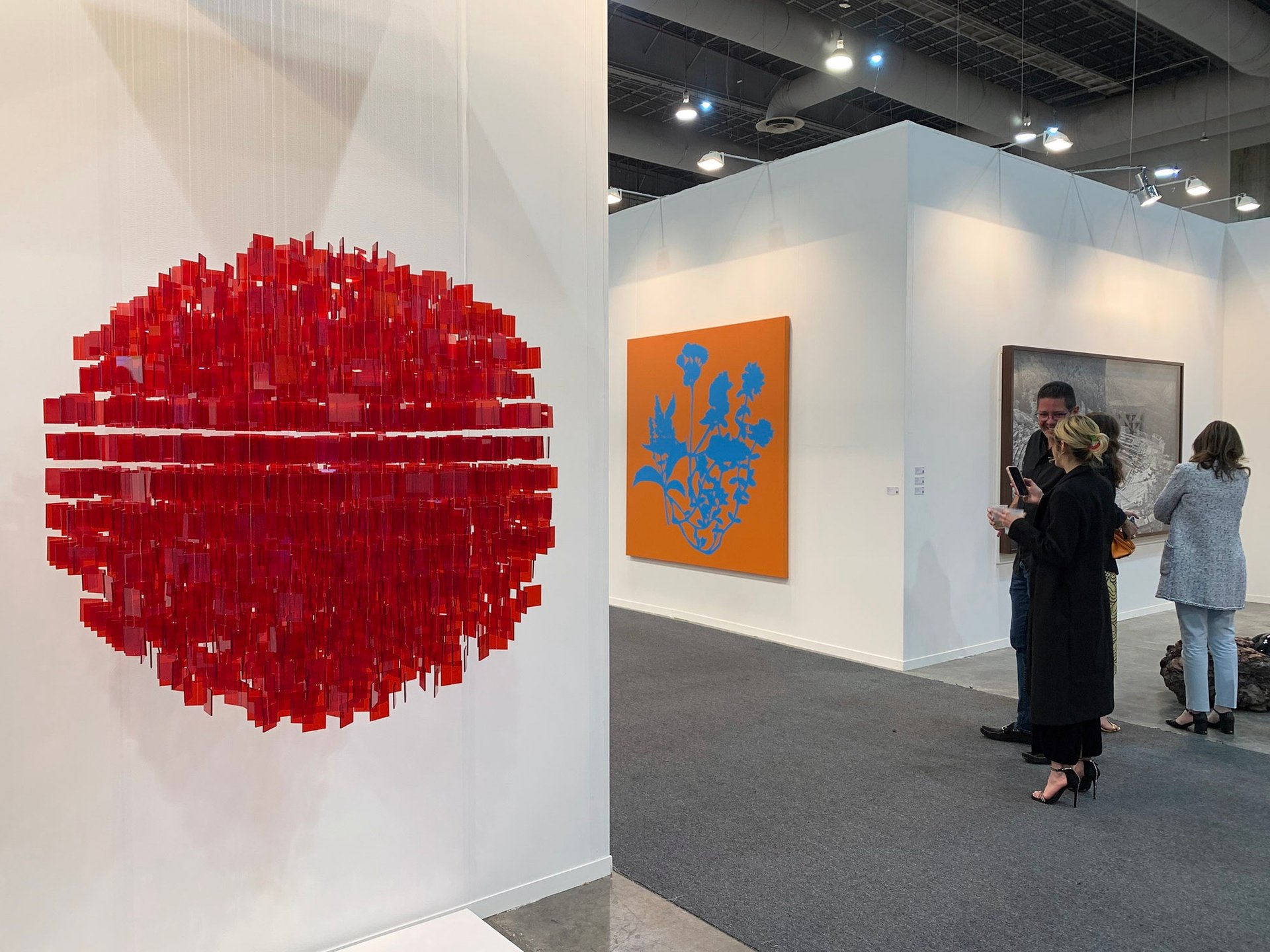
Works by Julio Le Parc (foreground, on the RGR stand) and Superflex (background, on the OMR stand) at Zona Maco Benjamin Sutton
“At some fairs we take a very targeted or focused approach, but Zona Maco is a large fair where we want to show off the breadth of our programme,” says Louise Carla Sala, a director at the gallery. “As one of the city’s biggest galleries, people are looking to us, so we feel we have a responsibility to show the best of our artists.” She adds that the fair is particularly important for cultivating the next generation of domestic collectors: “There are some Mexican collectors, especially younger ones, for whom this is their one time each year to make major purchases.”
In addition to fostering younger buyers, many dealers at the fair commented on the prevalence of museum groups plying the aisles—in search, perhaps, of future acquisitions or ideas for upcoming programming.
“The most buoyant of any edition we’ve attended”
“The first day of Zona Maco has been a very positive surprise; we have seen a number of collectors and museum groups that made it a very exciting moment,” says Malik Al-Mahrouky, a sales director at Kurimanzutto, another of the city’s most influential galleries (which also now operates a space in New York). “The number of national and international groups and clients that were present, in addition to the quality of the collections they represent, has made this one of the best editions.”
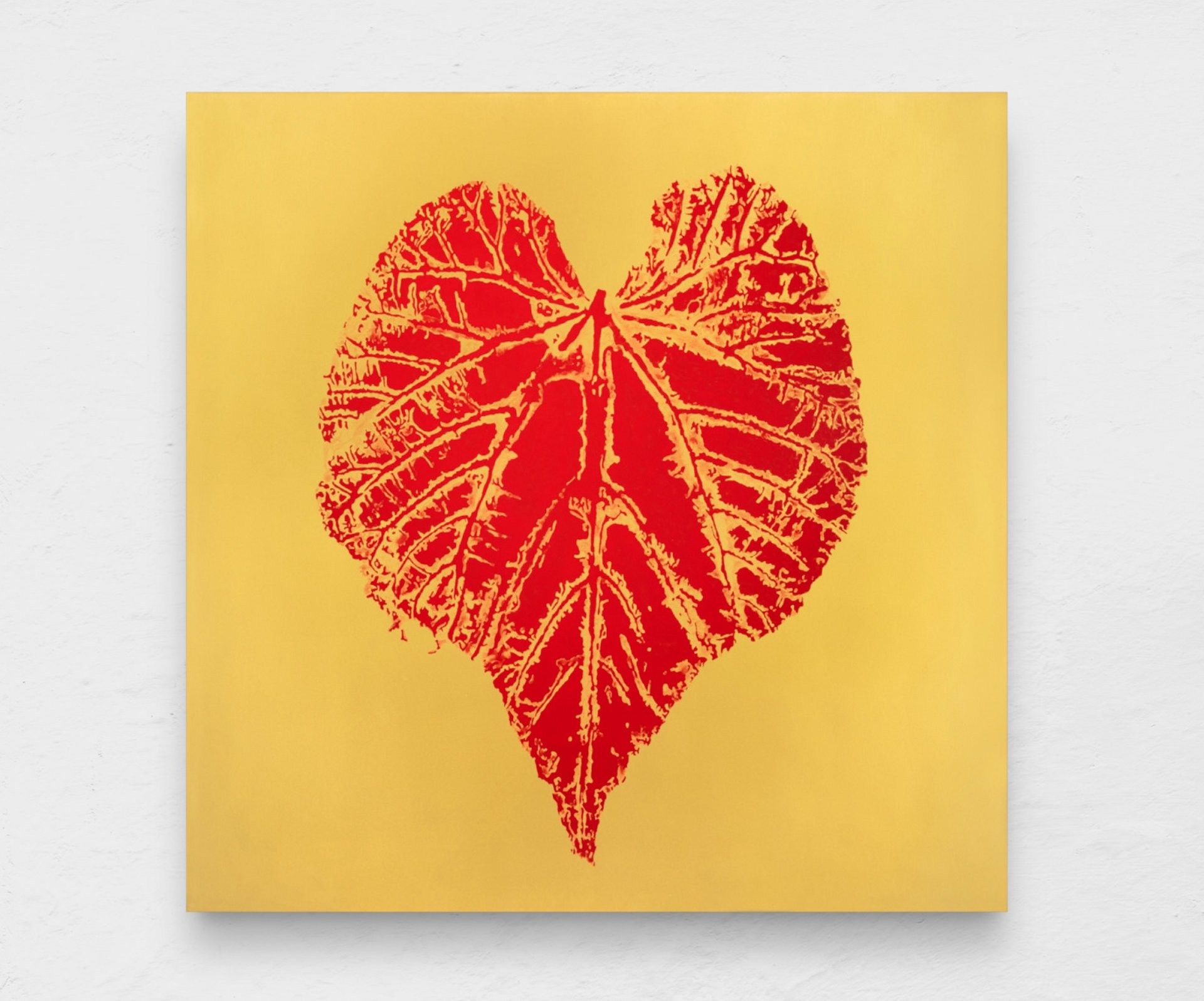
Gabriel Orozco, Untitled, 2024 Photo: © the artist, courtesy the artist and Kurimanzutto, Mexico City/New York
The gallery reported sales of works, ranging in price from $3,500 to $90,000, by Gabriel Orozco—whose major solo exhibition at Museo Jumex, Politécnico Nacional (until 3 August), opened a few days ago—Roberto Gil de Montes, Danh Vo, Leonor Antunes, Bárbara Sánchez-Kane, Gabriel Kuri, Dr Lakra, Damián Ortega and others.
Sean Kelly, which has locations in New York and Los Angeles, also reported strong sales at the end of the first day—from works on paper by established figures like Marina Abramović, Roni Horn, Idris Khan and Sam Moyer (ranging in price from $10,000 to $40,000) to a painting by Kehinde Wiley ($225,000) and a canvas by Janaina Tschäpe (in the range of $100,000 to $125,000). The gallery also found homes for pieces by several artists it is showing in Mexico for the first time, including Anthony Akinbola, Brian Rochefort and Ana González.
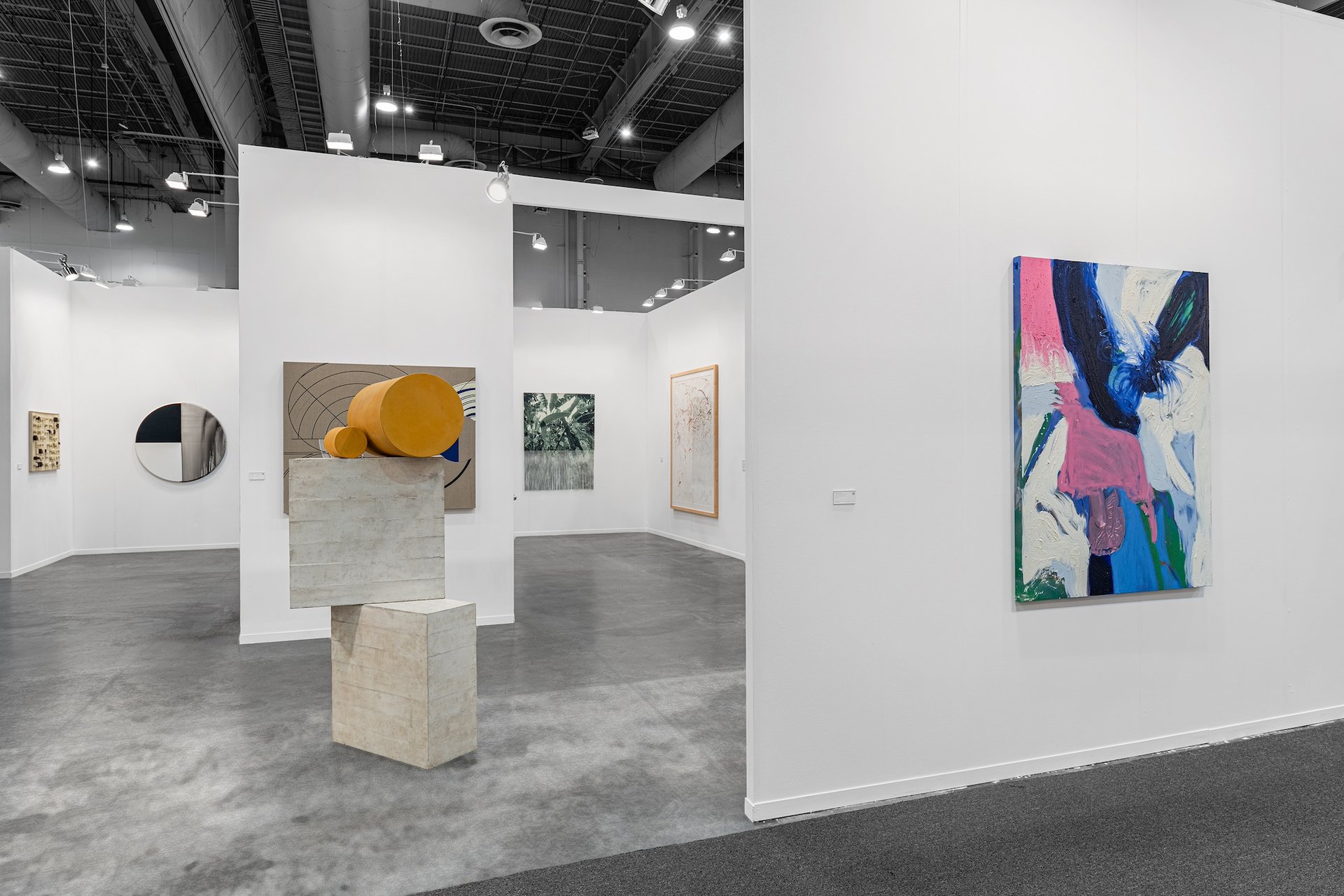
The Sean Kelly stand at Zona Maco Photo: Mikhail Mishin, courtesy Sean Kelly, New York/Los Angeles
According to Sean Kelly, this is the strongest start to Zona Maco in his gallery’s seven appearances there. “The mood of this fair is the most buoyant of any edition we’ve attended,” he says, noting the presence of many museum groups from the US and collectors from around the globe. “We’re selling across the board—to Americans, Mexicans, collectors from the Middle East and elsewhere.”
Another gallery headquartered in New York, Cristin Tierney, also had some sales and strong interest on opening day at its stand, featuring a cross-generational group of abstractionists. It is the gallery’s fourth time participating in the fair and, according to director Candace Moeller, that consistent presence has been key to building relationships with collectors in Mexico and further afield who return to Zona Maco every year.
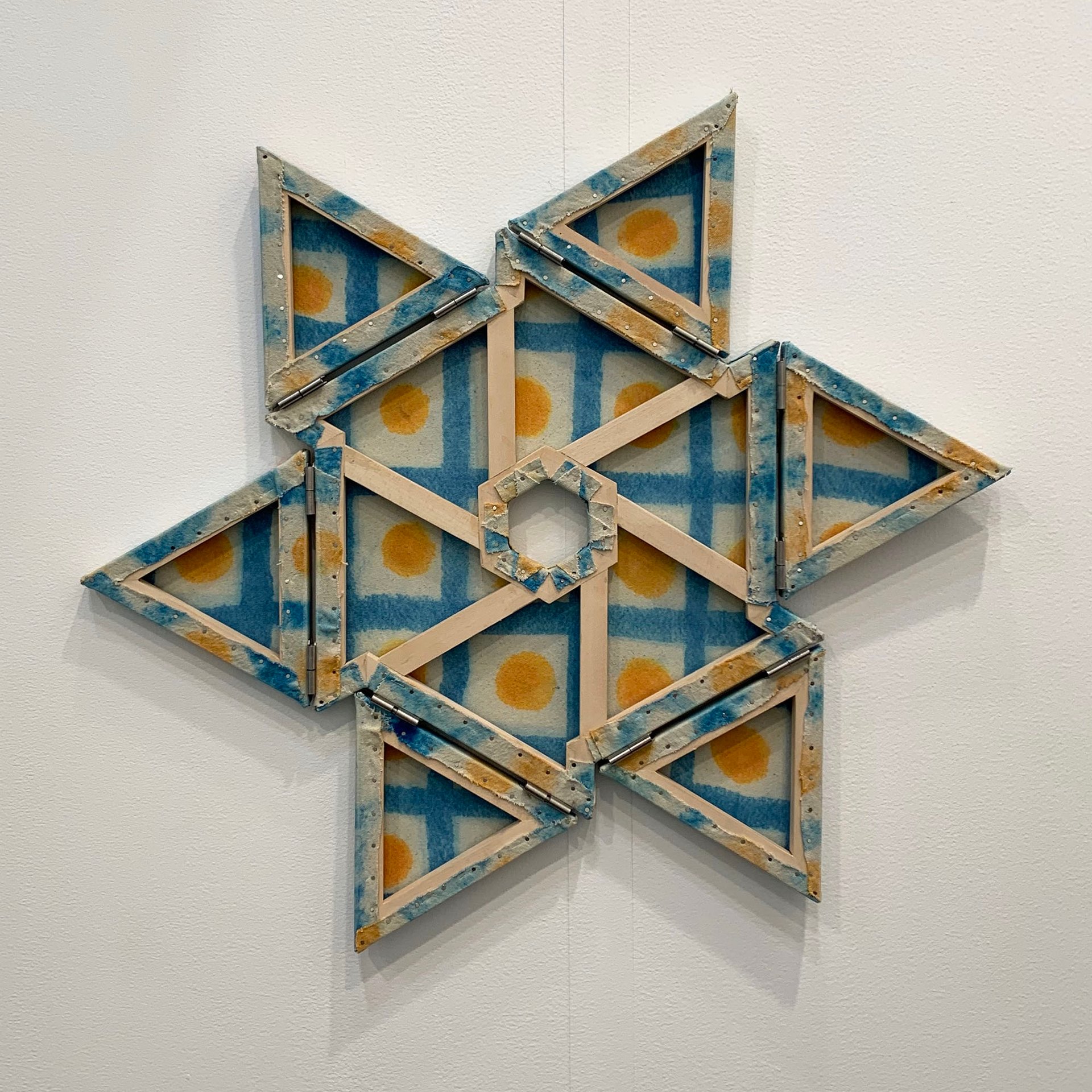
Debbi Kenote, Crown Shyness (2025), an abstract shaped canvas with movable points, on the Cristin Tierney stand at Zona Maco Benjamin Sutton
“They know who we are, and they have an established relationship with us and our programme,” she says. As for the stand’s focus on abstraction, she adds: “The history of art and design in Mexico City is slanted towards abstraction. Abstract work, and particularly painting, is very popular—abstraction is king here.”
The fair is indeed replete with compelling abstract works, including in its Modern art sector, where exhibitors are offering works by, among others, the Venezuelan artists Jesús Rafael Soto and Carlos Cruz-Diez and the Argentine sculptor Julio Le Parc.
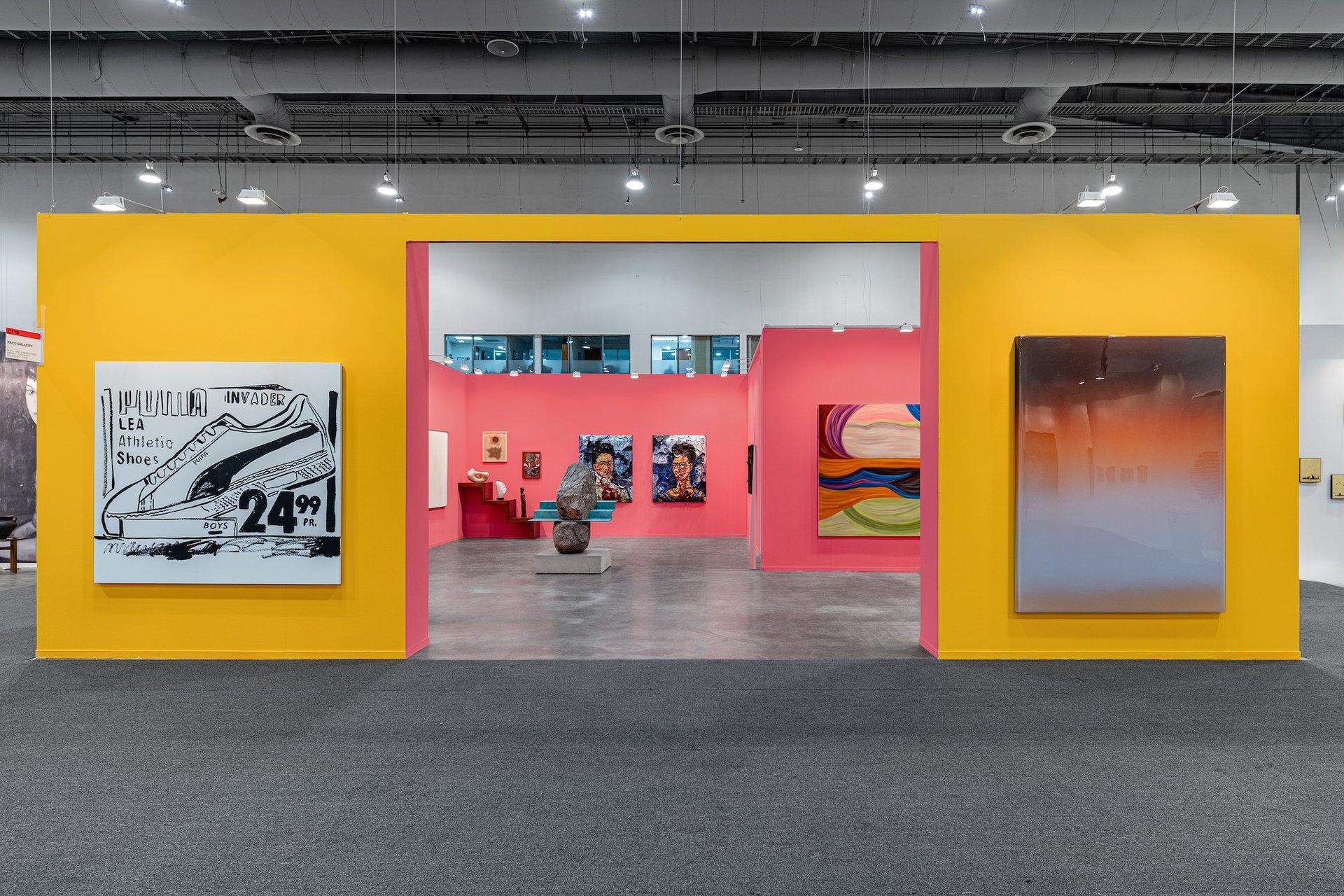
Installation view of Pace's stand at Zona Maco Courtesy Pace Gallery
The Pace stand is a tribute to Mexico City's king of bold colour and geometric abstraction in architecture, Luis Barragán, with its bright-pink interior and warm orange exterior. The strategy appears to have paid off, with the gallery reporting a half-dozen sales during the VIP preview, including a work on paper by Nigel Cooke for $110,000, a painting by Kylie Manning for $100,000, a ceramic and steel sculpture by Arlene Shechet for $75,000 and three works on paper by Robert Nava for $40,000 apiece.
Unafraid of tough topics
Another distinct feature of the fair is its prevalence of works with overtly political content—both figurative and abstract. This is a marked break from most fairs of Zona Maco’s size, where dealers and artists tend to shy away from sensitive subjects.
Perhaps most conspicuous in this regard is the stand of the Oslo-based gallery OSL Contemporary, whose walls are filled with a 13-scroll installation by the Norwegian artist Vanessa Baird. Titled Lost Humanity. One Way Ticket to Mars (2024), it depicts a grim, grey landscape roiling with smoke and littered with bloodied bodies and severed limbs and heads. At the bottom of each scroll is the date she completed the drawing, and one features a bright-yellow area with the text “end the occupation” and “boycott Israel”.
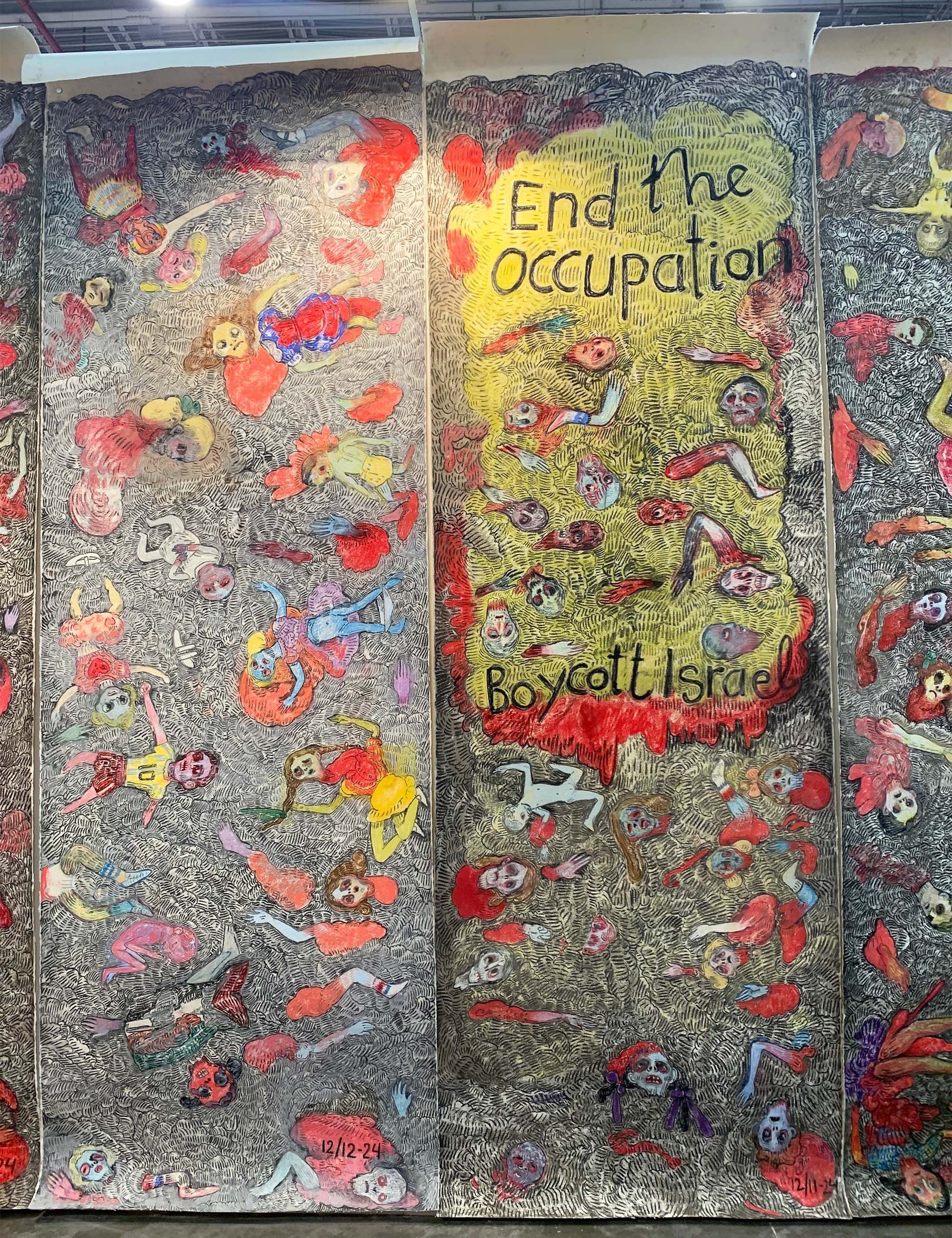
Partial view of Vanessa Baird's installation Lost Humanity. One Way Ticket (2024) on the OSL Contemporary stand at Zona Maco Benjamin Sutton
The artist, holding court amidst her drawings throughout VIP day, says the response to her installation had been largely supportive. “I’m not worried about how the work is received,” she says. “I’m worried about what’s happening in Gaza—this isn’t a war, it’s a massacre.”
Another very timely, eye-catching commentary is on view at Proyectos Monclova’s stand, where the Mexico City-born artist Josué Mejía has unleashed a flock of cartoonish, prehistoric birds. His kinetic sculptural installation Presagios en vuelo sobre pisos de madera (Omens in flight over wooden floors, 2024)—with five mechanical birds made of paper with drawings on their wings and small dinosaur skulls for heads—is “a commentary on how all this, the art world, depends on fossil fuels”, says a Proyectos Monclova staffer. He adds that the work has been acquired by a US institution.
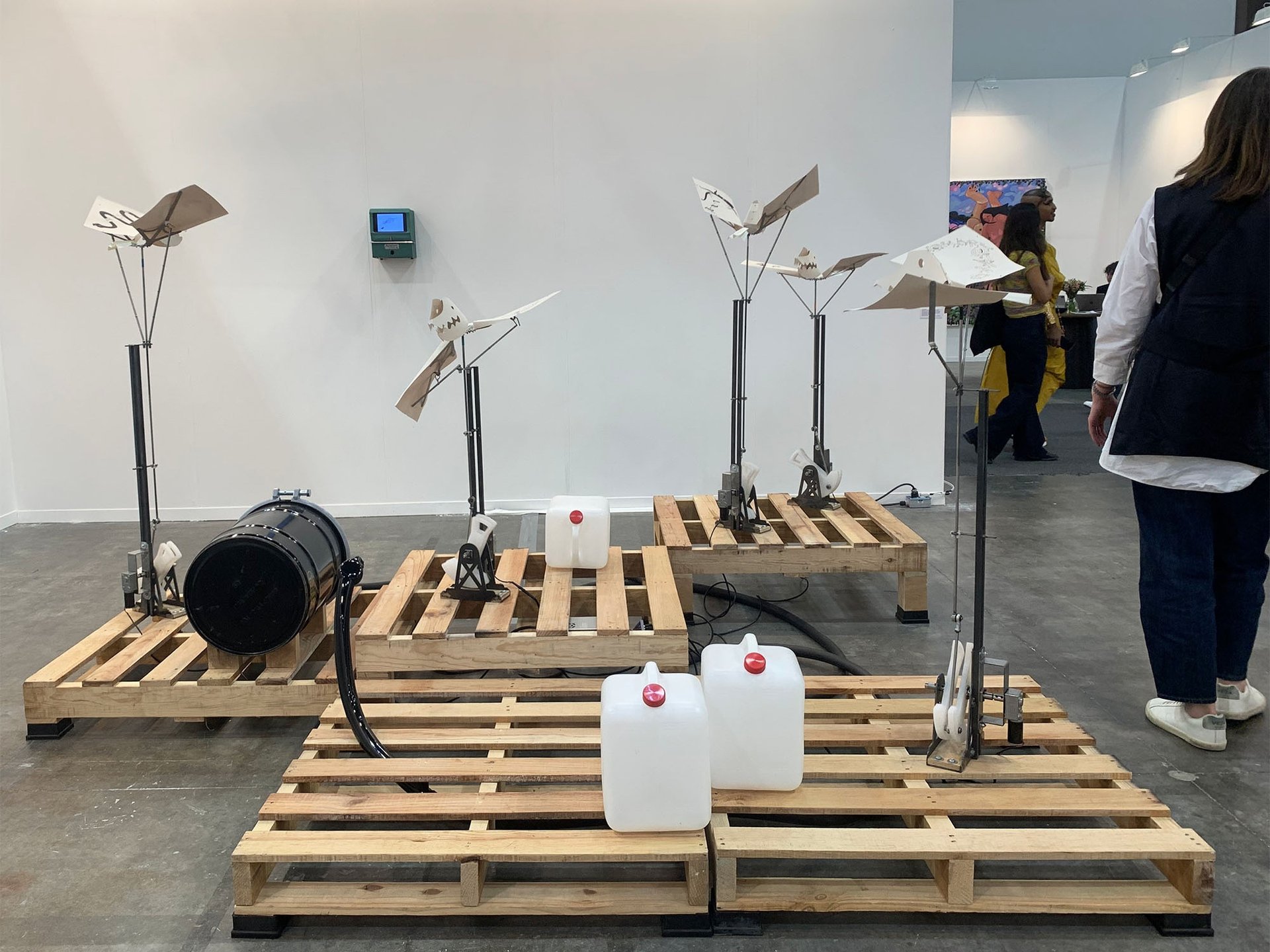
Josué Mejía, Presagios en vuelo sobre pisos de madera, 2024, on the Proyectos Monclova stand at Zona Maco Benjamin Sutton
In the fair’s Sur sector, devoted to art from the Global South, the Maryland-based gallery Rofa Projects has organised a three-person stand—featuring the Mexico City-born artist Amor Muñoz, the Chilean artist Francisca Rojas and the Peruvian artist Kukuli Velarde—that addresses issues of colonialism and migration. The stand includes figurative ceramics by Rojas and Velarde that reinterpret pre-Columbian forms and techniques to comment on the endurance of Indigenous traditions, as well as textile works by Muñoz and Rojas that convey subversive messages and histories through abstraction.
“The political situation in the US is pushing people to get out and see what else is happening in the world,” says Gabriela Rosso, the gallery’s director, noting that it is her eighth time showing at the fair and she has noticed “more English speakers than in years past”. She adds: “A fair like this is opening so many doors, while doors are being closed in the US.”
Also in the Sur sector, New York’s Palo Gallery is showing a solo stand of paintings and works on paper by the Liberia-born, New York-based artist Lewinale Havette. The works—some ghostly and monochromatic, others vibrantly saturated—are informed by Havette’s childhood experiences as a young girl migrating across West Africa with her family. They are priced between $1,500 for smaller works on paper, several of which sold during the preview, and $22,000 for the largest piece on view.
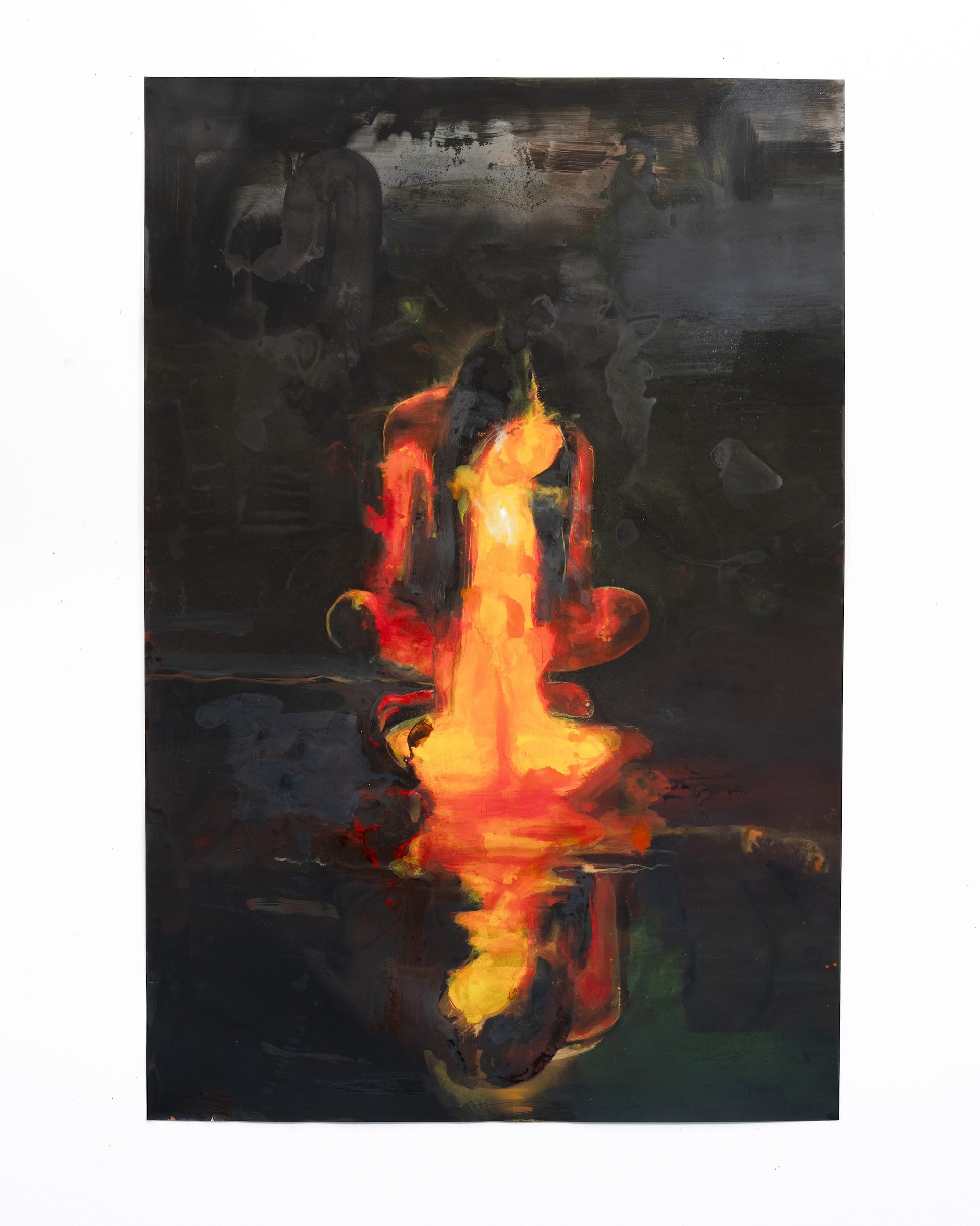
Lewinale Havette, Will I Mourn You the Rest of My Life?, 2024 Courtesy the artist and Palo Gallery
The gallery’s founder, Paul Henkel, says that “the fair has been incredible”, adding: “We are obviously a US gallery with European ties, so our immediate action was from the clients who already knew us and Lewinale Havette. However, we got a lot more engagement from Latin American collectors we have never met than expected. The general vibe was passionate curiosity and confidence in buying from a gallery they did not know yet, which was great.”
The Istanbul-based OG Gallery, founded in 2023 and focused on Turkish artists, is participating in its first fair in the Americas. “I’ve been working in galleries for 15 years. I’ve done all the fairs,” says gallery founder Senem Ozgoren. “Mexico, like Turkey, has these hybrid traditions and incredibly rich histories of archaeology and semiotics. I felt our artists’ work would find an audience.”
The gallery’s stand includes abstract collages by Seza Paker, a large canvas by Yaz Taşçı, joyously riffing on traditional female nudes, and a series of bold ceramic vases by Zeynep Solakoglu that feature elaborate mythological and art-historical references. Of the current political climate and its possible impacts on the art trade, Ozgoren says: “Now doesn’t feel like the time to do a fair in the US.”
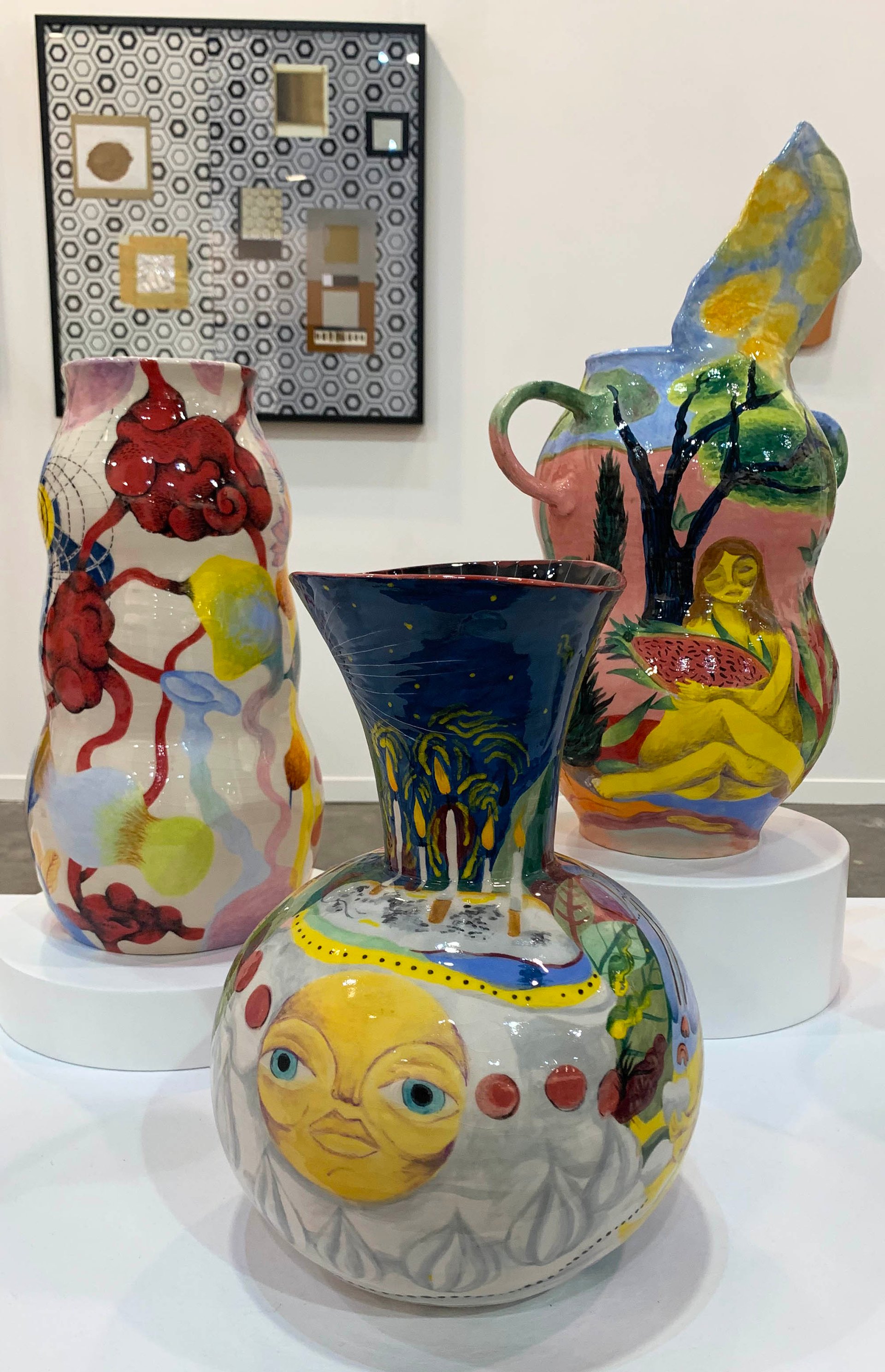
Ceramic works by Zeynep Solakoglu (foreground) and a collage by Seza Paker (background) on view in OG Gallery's stand at Zona Maco Benjamin Sutton
Ana Sokoloff, a founding partner of the New York-based advisory Sokoloff + Associates and a member of the Association of Professional Art Advisors, says that, increasingly, collectors from the US and elsewhere are not only travelling to Mexico City for its Art Week—which boasts Zona Maco and a growing field of satellite fairs like Material, Salón Acme, Unique Design X and Feral—but spending significant time here.
“There are a lot of people who have gotten second homes in Mexico,” Sokoloff says. “A lot of museum groups are walking around—it feels much busier than other years, not just the fair but the whole city.” She suggests that the entire city’s art ecosystem seems to be benefitting from new levels of coordination and alignment, adding: “The institutions, the galleries and the fairs have a great synergy this year.”
- Zona Maco, until 9 February, Centro Citibanamex, Mexico City


